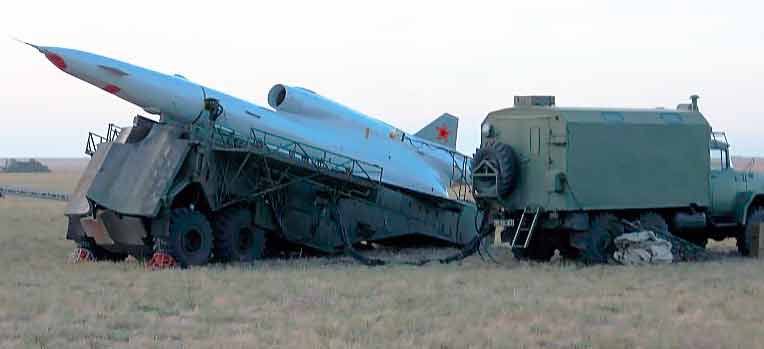On the night of March 11, a UAV crashed near the capital of Croatia, Zagreb, which was identified as a Soviet reconnaissance drone Tu-141 Strizh (Swift), also called VR-2. According to some reports, it was launched from the zone of the Russian-Ukrainian armed conflict. Nobody died. It is still unclear who launched it and for what purpose, and also why NATO surveillance systems did not notice such a large aircraft.
Jarun is a picturesque southern suburb of Zagreb, a favourite recreation area for residents of the Croatian capital. Around 23:00 on March 10, a roar shook the area – something huge fell from the sky. Metal debris scattered along Jarunska Street, a crater 3 meters wide and a meter deep formed, several cars were damaged.
Nearby, residents found two parachutes.
Croatian President Zoran Milanovic said that the military-type drone that crashed in Zagreb was fired from Ukraine.
Tu-141 Strizh defeats NATO radars
The six ton Tu-141 Strizh reconnaissance drone had a serious malfunction and crossed all of Hungary and parts of Romania until it reached Croatia. A direct flight from the Ukrainian border to Zagreb is almost 350 miles.
The Soviet-made Tu-141 Strizh drone flew over the airspace of three NATO member countries at a speed of 700 km/h at an altitude of 1300 m without being noticed by NATO radars.
Ukraine and Russia shrug it off
Ukraine is the only known operator of the Tu-141 drones worldwide.
Markiyan Lubkivsky, a former Ukrainian ambassador to Croatia and now an adviser to the Minister of Defense, told a Croatian public broadcaster that the drone is not Ukrainian.
“Ukrainian aircraft have different markings,” he said. He added that an official communication from the Ministry of Foreign Affairs of Ukraine and the General Staff of the Armed Forces of Ukraine regarding this incident is being prepared. He told the Ukrainian media that “there are red stars on the wreckage of the drone.”

Aleksey Arestovich, the adviser to the President’s Office, told Ukrainian media that the country does not have drones capable of covering such a distance.
“Most likely, [this is] a drone of the operational-tactical level, Russian, which was launched from our territory. It lost control and flew all the way to Croatia,” Arestovich suggested.
Russia said that it had shot down a similar drone in Crimea and was launched by Ukraine. Russia has decommissioned the last Swifts in early 2000.
Reactions from Croatia
The chief investigator of aviation accidents at the Croatian Accident Investigation Agency, Danko Petrin, told the media that modern drones are always in contact with the base. But this was an outdated model created in the Soviet Union in 1970. “There were cases when this type of aircraft could get out of control. I assume that this is also the case here because such aircraft are not missiles that are sent as weapons, but their goal is to return to the base to submit the collected data. After all, it’s unclear what exactly she could record at night. It is obvious that it was a mistake in the flight programming or that the aircraft got out of control, but that has yet to be determined by the investigation,” he said.
Reactions from Hungary
The Romanian Ministry of Defense reported that the drone moving from Ukraine was in the airspace of the country for less than three minutes, during which time it was not possible to identify it.
As per Hungarian Foreign Minister Peter Szijjarto, on Friday night, Hungarian air defense systems noticed an unidentified object in the sky in the northeast of the country, which later turned out to be a drone. It is noted that the UAV crashed on the outskirts of Zagreb.
“Gripen [multi-role fighters] on duty took off from the air force base in Kecskemet, which checked the area, but did not find flying objects there and therefore returned to the base,” he told local press.
Eyebrows raised over NATO missile defence effectiveness
A retired Croatian military pilot Ivan Selak, in an interview with a local channel, suggested that the drone fell due to the fact that it ran out of fuel. It flew a thousand kilometres, and surprisingly, it was not picked up by radar, he noted. In the airspace of Croatia, the plane was 8-9 minutes and flew over Hungary even longer.
The UAV flew about 1300 km, and the Hungarians did not notice it, he said. The UAV flew at a higher altitude, and the RCS is also not small, he added.
He said NATO was responsible for detecting, raising the alarm and interception as the radars in Hungary, Croatia and other places are directly linked to the command post at Torrejon Airbase in Spain.
“NATO’s integrated air defense system should be activated within 15-20 minutes, after which fighters should take off,” he said.
“The facts will be established. How is it possible for an old-style aircraft to spend more than one hour in the sky over NATO member countries, and no one notices (…) Military services are involved in the investigation,” said Croatian President Zoran Milanovic.
Responding to the Croatian press, NATO said that Alliance’s missile defense system had recorded the flight path of the object that had fallen in Zagreb.
Tu-141 Strizh drone
The first prototype of the Tu-141 unmanned aerial vehicle flew in December 1974. The first experimental Tu-141 flew with experimental KR-17A engines. Serial production of Tu-141 began in 1979 at the Kharkiv Aviation Plant (former No. 135). The production ended in 1989, and 152 Tu-141 UAVs were produced.
The landing of the UAV was carried out using a parachute system.
The drone could fly 1110 km/h, up to 1000 km and the practical ceiling was 6000 meters.
